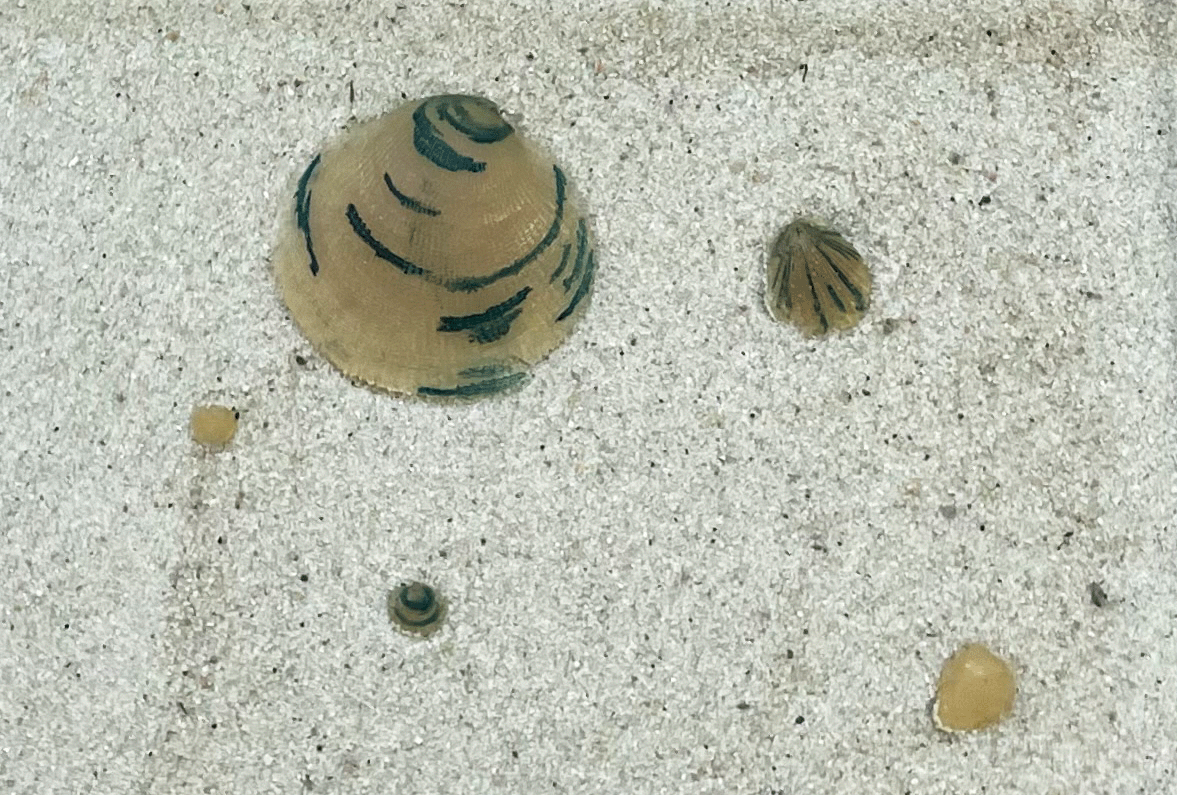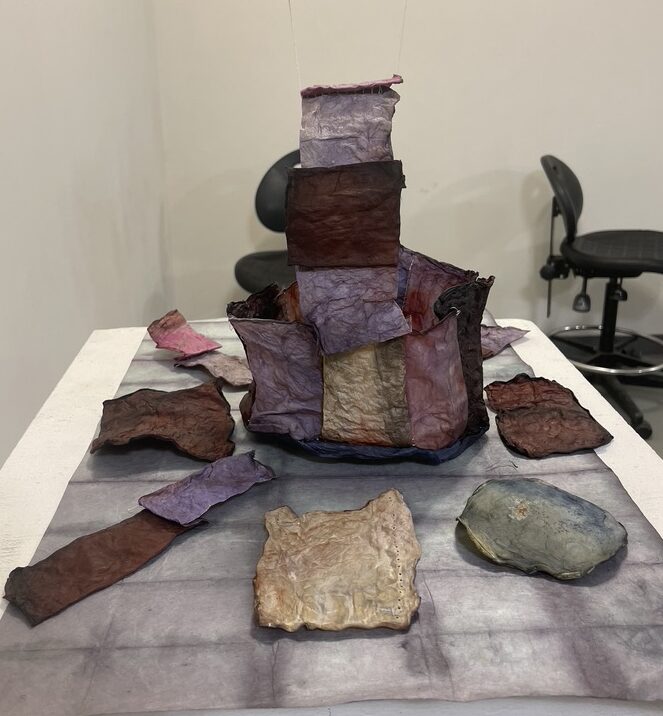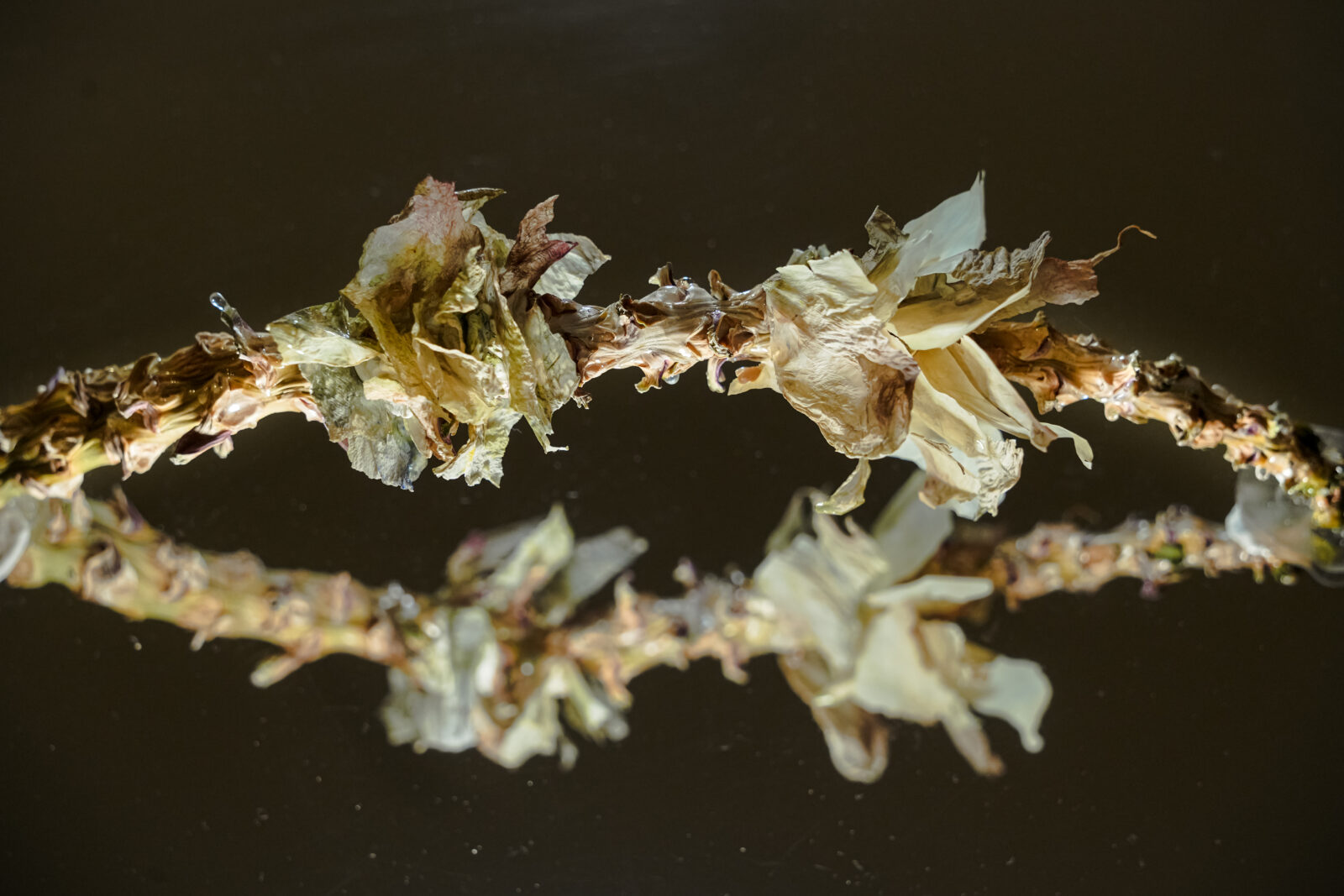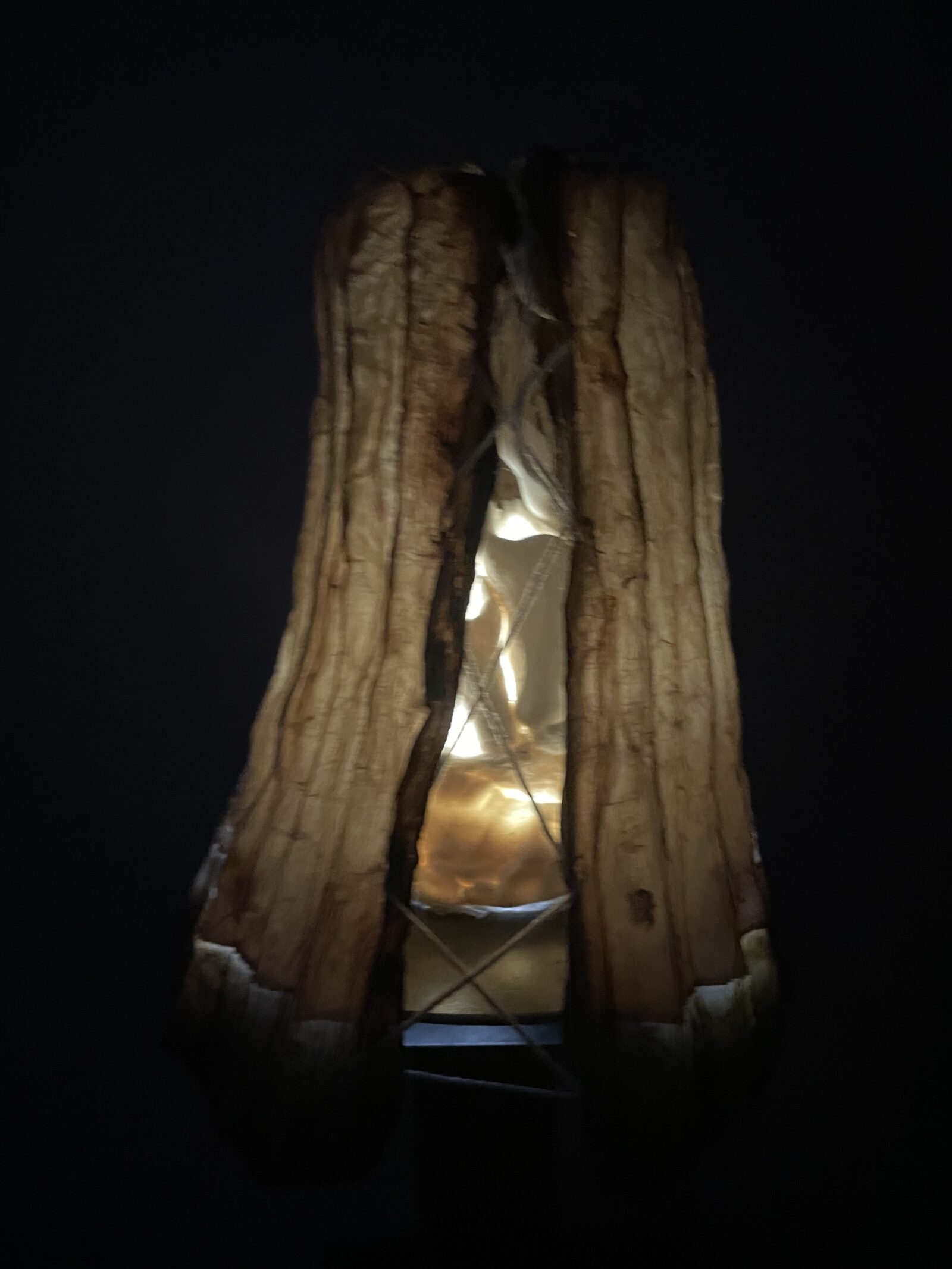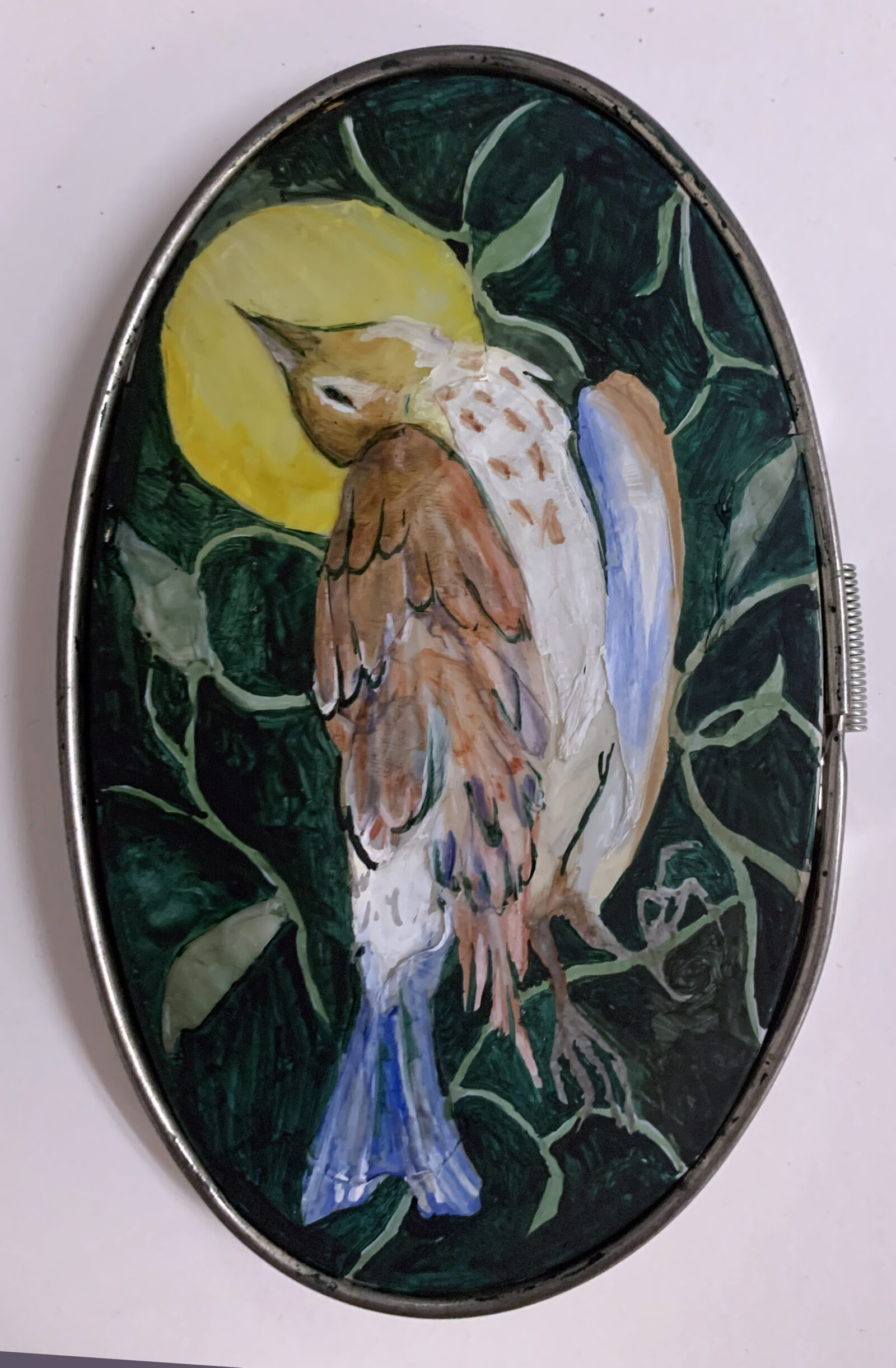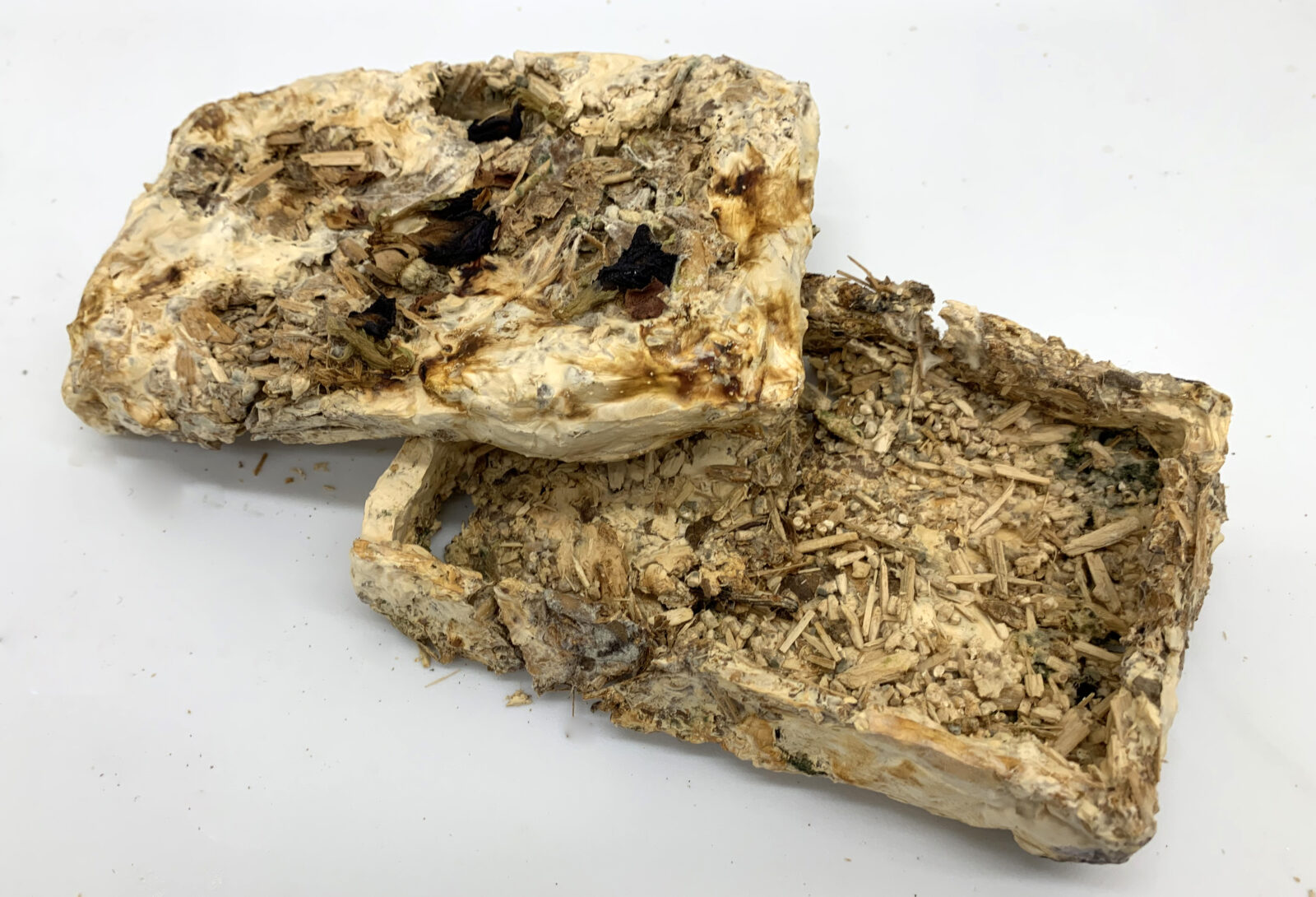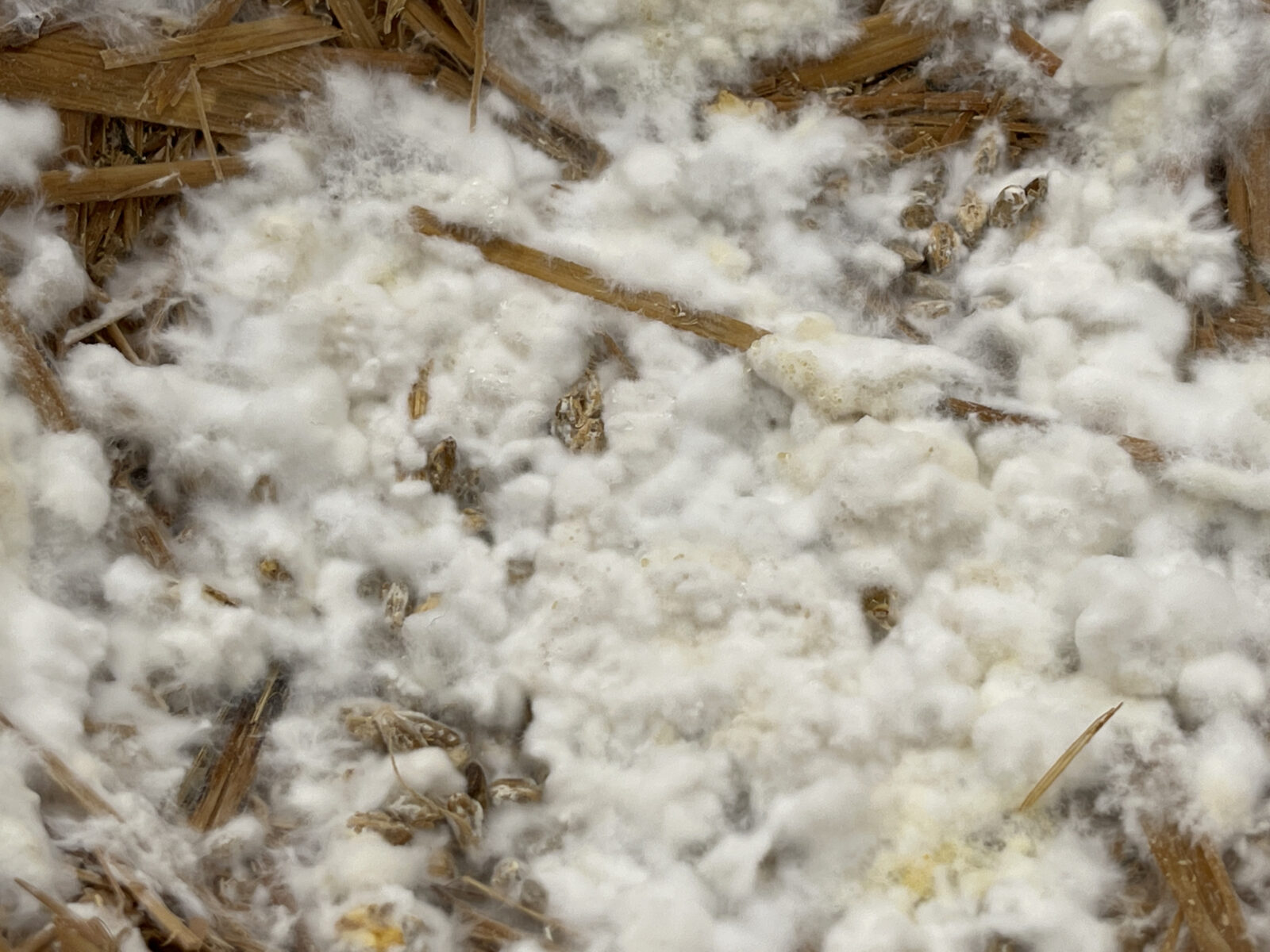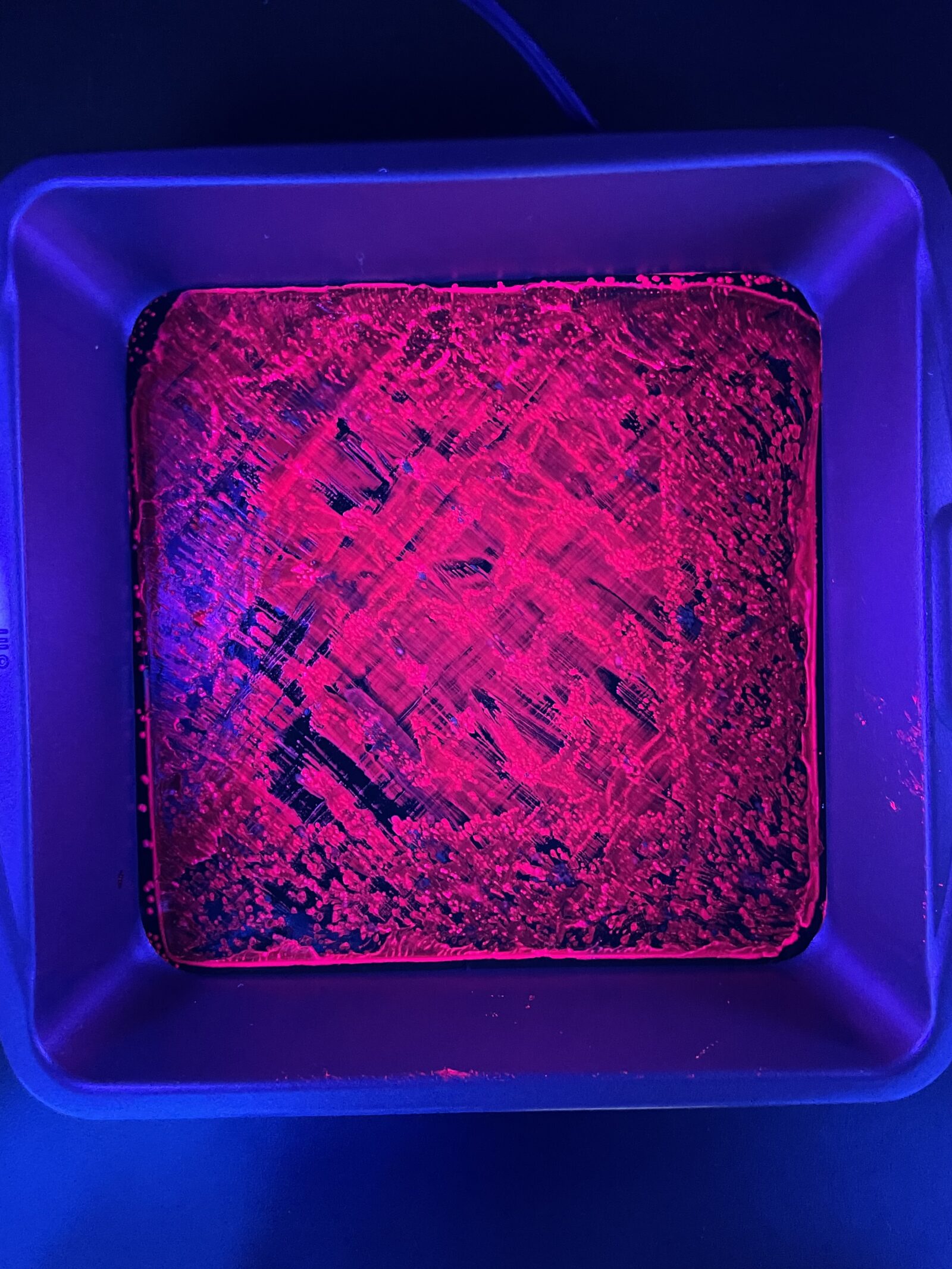put your 50 word project sttement here
A basket made out of pieced bacterial cellulose, naturally dyed with indigo, logwood, pokeberry, and cutch: a basket to hold the remnants of a lifecycle, to become a placeholder for time, to honor the gathering of information, to pay respect to process, to give back to the the soil we came from.
Combines the bacterial cellulose and brussel sprouts branch to recreate a new plant.
The nostalgia of childhood combined with the mothering of materials in relation to my own relationship with my mother.
I was really interested in the materiality of the bacterial cellulose that we worked with, particularly in the ways it interacted with light and it’s versatility. I made a series of objects intended to be suncatchers, interactive with natural and bright light. I tried sculpting forms, embroidering, and watercolor painting and layering.
This project consists of two boxes grown from mycelium. The smaller box is made with grey dove oyster mushrooms, and the larger is a mix of grey dove and pink oysters. Each is decorated with passionflowers. The boxes are intended to be small caskets or burial vessels for birds or other small animals.
This project is a simple exploration in the cultivating bacterial cellulose for use an artistic medium. The finished project is a light-hearted commentary on unsustainable nature of air travel. All of the materials used in this project are renewable and biodegradable.
This project used Grey Dove (Pleurotus Ostreatus) oyster mycelium to “weave” a basket-like nest out of straw. This nest was then populated with egg-like objects sculpted from polymer clay. These “eggs” each reference other biological materials or processes. They appear here out of their typical context, just as basket weaving is not the typical behavior or context of mycelium.
The goal of this project was to recreate the appearance of a traditional “gummy worm” using lab materials. The material used here were agar agar, xanthan gum, and E. Coli that has been modified to produce a variety of fluorescent proteins.
Can bacteria, or other organisms, ‘flag’ consent? The human ability to give and receive consent comes with environmental, sociological, and political responsibility, accountability, and obligation.
